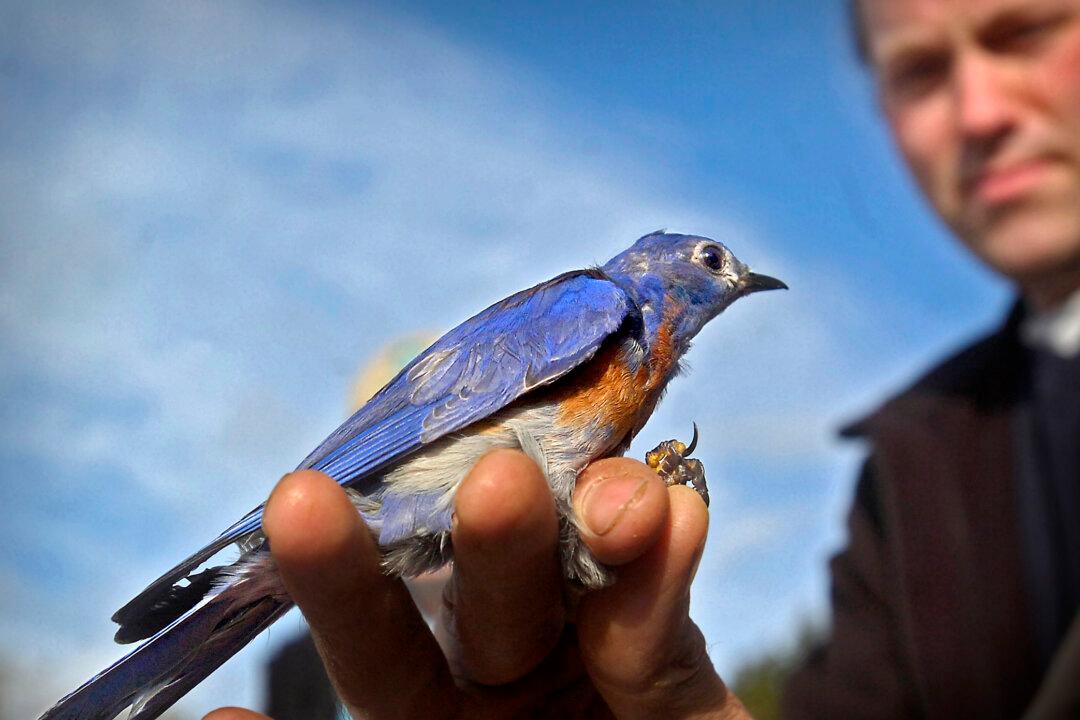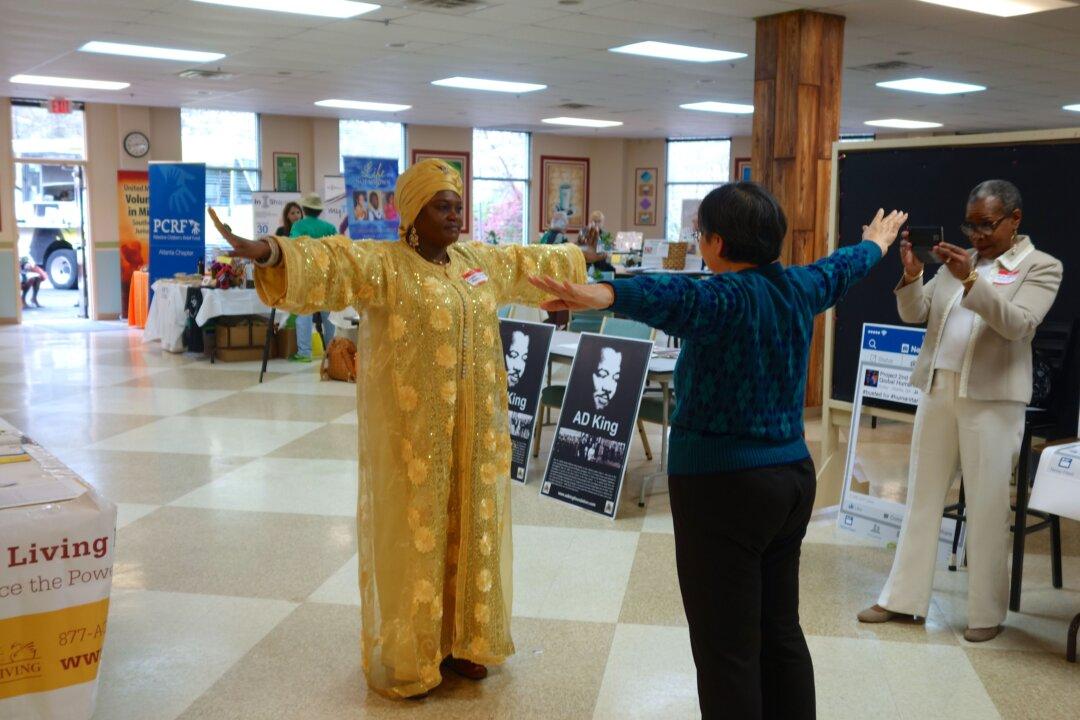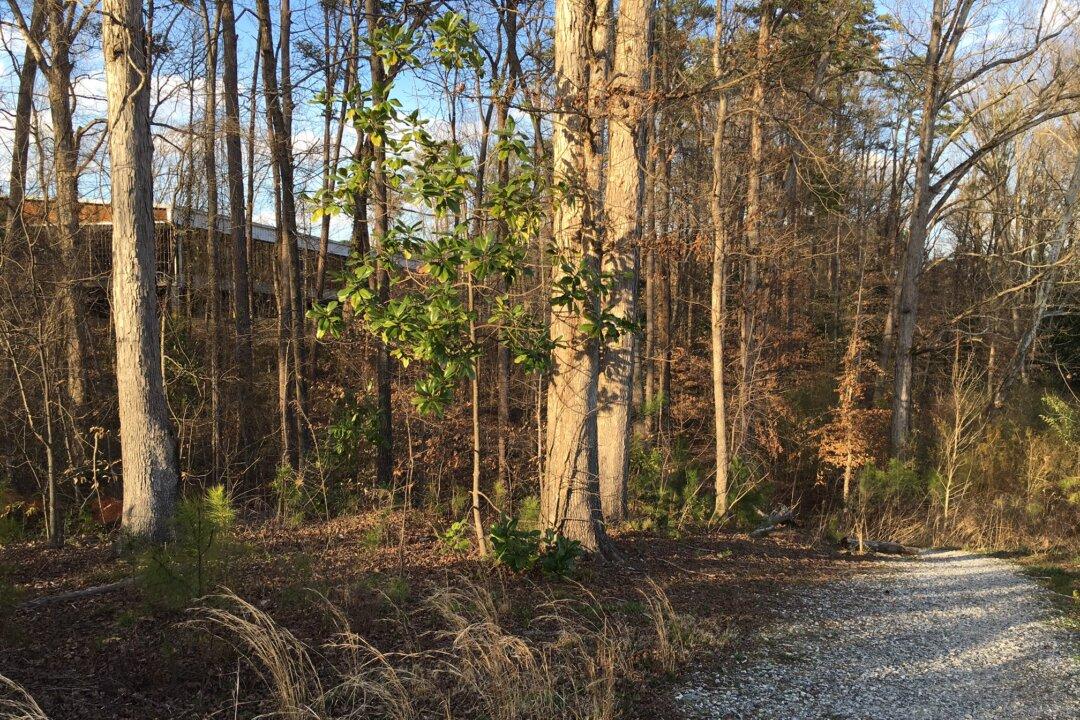A skittering sound would announce my bluebird stalker—that’s how I knew he was back. There, at the window, a tap, a flutter, and a flash of blue. If I approached, sometimes he would grab the sill with his curved claws and look at me sideways. For quite a while, he stayed on the sill and watched me do qigong, tilting his head.
Approaching him with a camera was another thing. Even with no flash, he was not having that. He soared off. Soon, another tap announced his return.
It’s nesting time. Mr. Bluebird is busy. He and Mrs. Bluebird excited me yesterday by investigating the nesting box I had hung on a tree for them, punctually by Valentine’s Day, just like garden guru Walter Reeves told me to do.
According to Cornell University, at nesting time a male bluebird will select a good nesting site. It should have open grass, high places to perch, such as utility wires, knee-high shrubs, like those in old fields, and mature trees. Mr. Bluebird stayed near the spot and pitched it loudly to Mrs. Bluebird, singing and doing suave, Old Spice-style moves. If she accepts, they set up house, and she builds the nest.
Bluebird populations crashed in the 20th century. From 1920 to 1970, they dropped 90 percent, according to Songbird Essentials. Two things nearly wiped them out: The loss of nesting habitats, such as tree holes, rotted out fence posts, and old orchards; and the introduction of the starling and house sparrow from Europe in the 19th century. Those two are aggressive—they killed baby bluebirds and took over nests.
New York’s official state bird was on a list of “species of special concern,” but have now staged a comeback, with a lot of human help.
People put up nesting boxes around the country, and that was enough to let them thrive.





